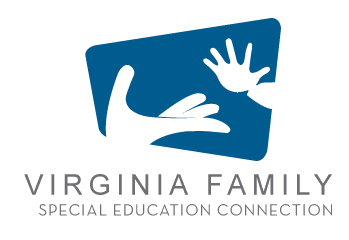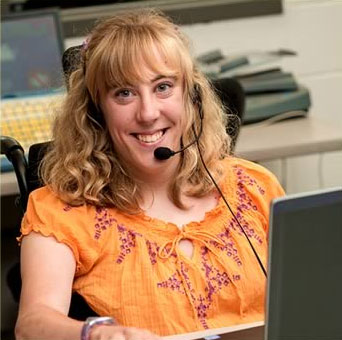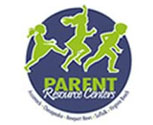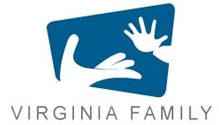Middle School
In the Commonwealth of Virginia there are several diploma options available for students with disabilities. When determining the appropriate track for your child it is important to understand the different requirements for each diploma. Currently, students wishing to earn an Advanced Studies Diploma must earn 26 standard credits and 9 verifiable credits across the curriculum. A verifiable credit is earned when the student passes the class and corresponding end of course test associated with that class. For example, to earn a verifiable credit in Algebra, the student must pass the class and the Standards of Learning (SOL) test associated with that class. Individuals on a Standard Diploma track must earn 22 standard credits and 6 verifiable credits across the curriculum. Students with disabilities pursuing a Standard Diploma may also be eligible for credit accommodations to help them attain the necessary verifiable credits needed for this diploma. Please check with your child’s case manager or guidance counselor for more information on credit accommodations.
A child with a disability can receive an Applied Studies Diploma for completing the requirements outlined in his/her individualized education program (IEP). The Virginia Alternate Assessment Program (VAAP) is available to students following an adapted or functional curriculum and is used in lieu of the SOLs as a means to assess learning. Other alternatives to the SOLs are Virginia Grade Level Alternative (VGLA), Virginia Substitute Evaluation Program (VSEP), and the Virginia Modified Achievement Standards Test (VMAST). The specific requirements for each vary depending on the diploma track and additional information can be found on the Virginia Department of Education (VDOE) website at the link below.
In Virginia students with disabilities must begin transition planning once the student turns fourteen (14) years of age, or earlier if deemed necessary by the student’s IEP committee. In preparing for life as an adult three primary areas of consideration should be included in the transition plan: employment, education and independent living. The individual needs of the student, in addition to their strengths, challenges and interests, should all be discussed and outlined in the transition plan. The student should be an active participant in transition planning and the IEP process to help him/her foster the self-advocacy skills that will be needed as he/she matures into adulthood.
It is important to note that educational rights transfer to the student at the age of 18 unless the student transfers these rights back to the parent or guardian. For students with disabilities this means that the student signs his/her IEP and has the rights afforded to the parent when the child was considered a minor. The VDOE and disAbility Law Center provide sample forms to assist families with this process.
- Center for Transition Innovations (CTI)
- Critical Decision Points for Families of Children with Disabilities (VDOE)
- disAbility Law Center of Virginia
- Employment Checklist for Students (Ages 14-22) with Disabilities (PEATC)
- Enhancing and Practicing Executive Function Skills with Children from Infancy to Adolescence (Activities Guide)
- Expect, Engage, Empower: Successful Transitions for All! (U.S. DOE)
- Guide to Transition for Families of Youth with Disabilities in Virginia (PEATC)
- I’m Determined
- Life Skills Checklist (PEATC)
- Navigating Through Life Infographic Series
- Planning Your Future A Guide To Transition (NCLD)
- Secondary Transition: Why it is important to plan early (VDOE)
- Transition IEP Checklist (PEATC)
- Transition Services for Students with Disabilities (VDOE)
- Transition to Adulthood Resources (PEATC)
- The Art of Impact: A Handbook for Self Determined Living
- Virginia Parents’ Tips for Transition Planning
Puberty can be a time of mixed feelings for parents and pre-teens. It may be a time of pride and celebration, as well as a time of worry and confusion. It is hard for pre-teens to understand the many changes that come along with puberty. Also, parents may feel unsure of how to explain these changes to their child.
- ATN/AIR-P Puberty and Adolescent Resource: A Guide for Parents (Autism Speaks)
- Let’s Talk About Sex: Students with Disabilities and their Sexual Health (A Toolkit for Parents of Students with Disabilities) PEATC
- Sexual Health and Wellness Resources (PEATC)
- Teaching Children with Down Syndrome about Their Bodies, Boundaries, and Sexuality
- The Healthy Bodies Toolkit (Vanderbilt Kennedy Center) (English, Spanish, Portuguese, Turkish and Thai versions)
Mental health refers to our cognitive, behavioral, and emotional wellbeing - it is all about how we think, feel, and behave.
- Child and Adolescent Mental Health (National Institute of Mental Health, NIMH)
- Free Educational Brochures - Mood Disorders: Depression and Bipolar Disorder (Depression and Bipolar Support Alliance, DBSA)
- Mental Health Resource List
- SAMHSA (Substance Abuse and Mental Health Services Administration)
- Virginia Family Network (VFM), Program of NAMI Virginia (The NAMI Virginia website is available in Arabic, Chinese, English, Filipino, French, German, Hmong, Italian, Japanese, Korean, Lao, Persian, Polish, Punjabi, Russian, Spanish, Thai and Vietnamese.)











